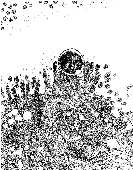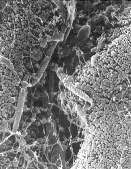




|

|

In general terms, the focus of our
investigations lies in determining the underlying molecular mechanisms
of microbial pathogenesis and the connection between bacterial
infection and human pathophysiology and neoplasia. Currently we have
been interested in studying Citrobacter rodentium and Helicobacter
hepaticus. Our general objectives include producing animal models to
study disease and identifying and cloning genes necessary for
virulence.
Recent Publications
Updated Feb 2004
Jellison KL, Distel DL, Hemond HF, Schauer DB.
Phylogenetic analysis of the hypervariable region of the 18S rRNA gene of Cryptosporidium oocysts in feces of Canada geese (Branta canadensis): evidence for five novel genotypes.
Appl Environ Microbiol. 2004 Jan;70(1):452-8.
Suerbaum S, Josenhans C, Sterzenbach T, Drescher B, Brandt P, Bell M, Droge M, Fartmann B, Fischer HP, Ge Z, Horster A, Holland R, Klein K, Konig J, Macko L, Mendz GL, Nyakatura G, Schauer DB, Shen Z, Weber J, Frosch M, Fox JG.
The complete genome sequence of the carcinogenic bacterium Helicobacter hepaticus.
Proc Natl Acad Sci U S A. 2003 Jun 24;100(13):7901-6. Epub 2003 Jun 16.
Garcia A, Marini RP, Feng Y, Vitsky A, Knox KA, Taylor NS, Schauer DB, Fox JG.
A naturally occurring rabbit model of enterohemorrhagic Escherichia coli-induced disease.
J Infect Dis. 2002 Dec 1;186(11):1682-6. Epub 2002 Nov 04.
Jellison KL, Hemond HF, Schauer DB.
Sources and species of cryptosporidium oocysts in the Wachusett Reservoir watershed.
Appl Environ Microbiol. 2002 Feb;68(2):569-75.
Ge Z, Feng Y, White DA, Schauer DB, Fox JG.
Genomic characterization of Helicobacter hepaticus: ordered cosmid library and comparative sequence analysis.
FEMS Microbiol Lett. 2001 Oct 16;204(1):147-53
Mansfield KG, Lin KC, Xia D, Newman JV, Schauer DB, MacKey J, Lackner AA, Carville A.
Enteropathogenic Escherichia coli and ulcerative colitis in cotton-top tamarins (Saguinus oedipus).
J Infect Dis. 2001 Sep 15;184(6):803-7. Epub 2001 Aug 08
Newman JV, Kosaka T, Sheppard BJ, Fox JG, Schauer DB.
Bacterial infection promotes colon tumorigenesis in Apc(Min/+) mice.
J Infect Dis. 2001 Jul 15;184(2):227-30.
Luperchio SA, Schauer DB.
Molecular pathogenesis of Citrobacter rodentium and transmissible murine colonic hyperplasia.
Microbes Infect. 2001 Apr;3(4):333-40. Review.
Chin EY, Dangler CA, Fox JG, Schauer DB.
Helicobacter hepaticus infection triggers inflammatory bowel disease in T cell receptor alphabeta mutant mice.
Comp Med. 2000 Dec;50(6):586-94.
Solnick
JV, Schauer DB.
Emergence of Diverse Helicobacter Species in the
Pathogenesis of Gastric and Enterohepatic Diseases.
Clin Microbiol Rev. 2001 Jan;14(1):59-97.
Luperchio
SA, Newman JV, Dangler CA, Schrenzel MD, Brenner DJ, Steigerwalt AG, Schauer
DB.
Citrobacter rodentium, the causative agent of transmissible murine colonic hyperplasia, exhibits clonality: synonymy of C. rodentium
and mouse-pathogenic escherichia coli.
J Clin Microbiol. 2000 Dec;38(12):4343-50.
Young
VB, Schauer DB.
Cytolethal distending toxin: A bacterial toxin which
disrupts the eukaryotic cell cycle.
Chem Res Toxicol. 2000 Oct;13(10):936-9. No abstract
available.
Young
VB, Chien CC, Knox KA, Taylor NS, Schauer DB, Fox JG.
Cytolethal distending toxin in avian and human isolates
of Helicobacter pullorum.
J Infect Dis. 2000 Aug;182(2):620-3.
Young
VB, Dangler CA, Fox JG, Schauer DB.
Nucleotide Chronic atrophic gastritis in SCID mice
experimentally infected with Campylobacter fetus.
Infect Immun. 2000 Apr;68(4):2110-8.
Young
VB, Knox KA, Schauer DB.
Protein, Nucleotide Cytolethal distending toxin
sequence and activity in the enterohepatic pathogen Helicobacter hepaticus.
Infect Immun. 2000 Jan;68(1):184-91.
Liu
H, Magoun L, Luperchio S, Schauer DB, Leong JM.
The Tir-binding region of enterohaemorrhagic Escherichia
coli intimin is sufficient to trigger actin condensation after bacterial-induced host cell signalling.
Mol Microbiol. 1999 Oct;34(1):67-81.
Newman
JV, Zabel BA, Jha SS, Schauer DB.
Protein, Nucleotide Citrobacter rodentium espB is
necessary for signal transduction and for infection of laboratory mice.
Infect Immun. 1999 Nov;67(11):6019-25.
Dewhirst
FE, Chien CC, Paster BJ, Ericson RL, Orcutt RP, Schauer DB, Fox JG.
Nucleotide Phylogeny of the defined murine microbiota:
altered Schaedler flora.
Appl Environ Microbiol. 1999 Aug;65(8):3287-92.
Electron Microscopy of Enteric Microrganisms
These images were generated using scanning
and transmission electron microscopy- Flexispira rappini appear
above the surface of the microvilli of a murine intestinal tract.
C. rodentium has the ability to intimately
attach to the microvilli of the murine intestinal tract.
Here we see an interesting consequence of intimate attachment:
pedestal formation at the site of attachment due to an
accumulation of actin filaments.
Please direct comments to
schauerlab-www@mit.edu.
Graphic Design by Alison Luperchio.
Maintained by
Nancy Guillen.
|







